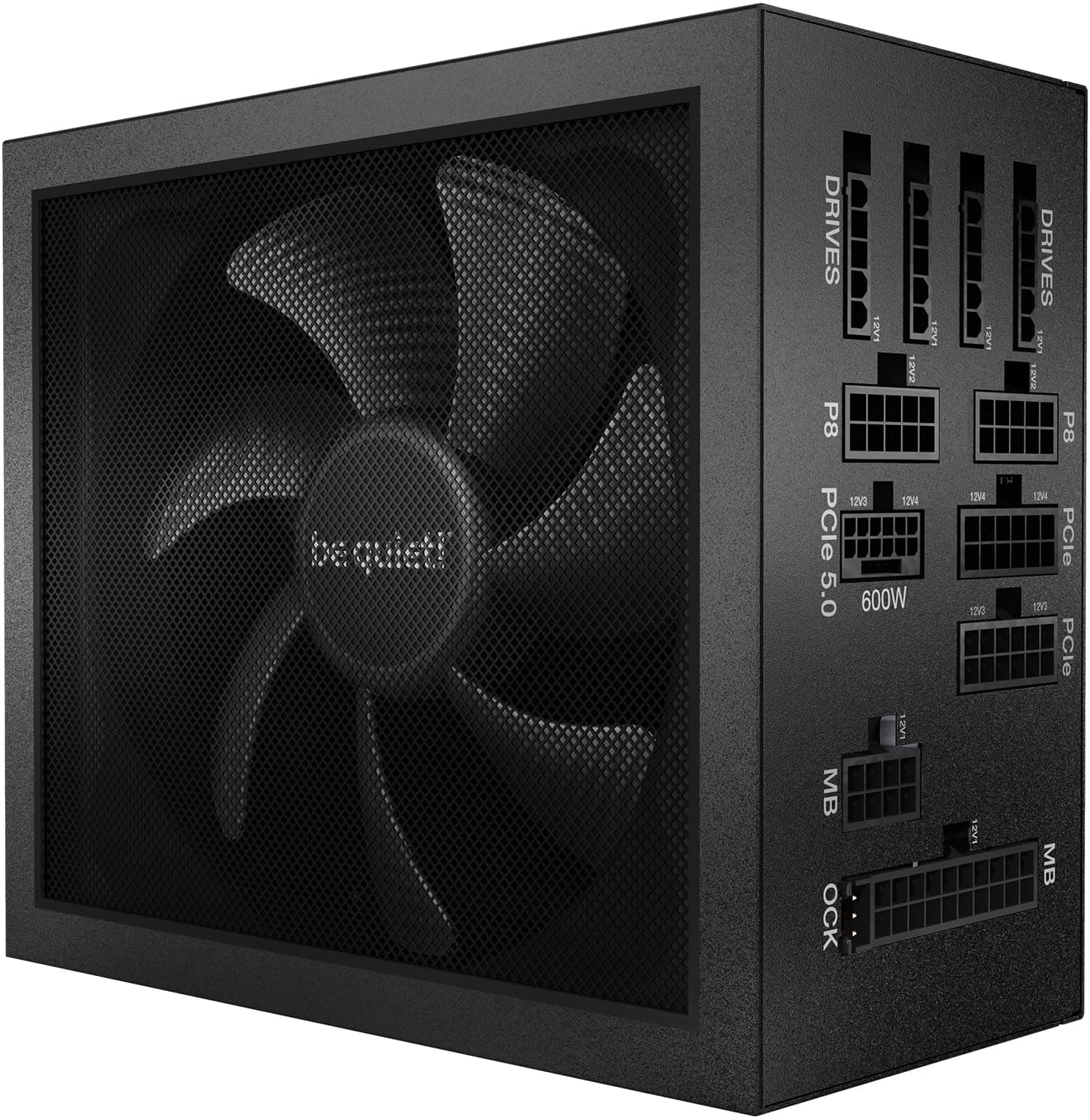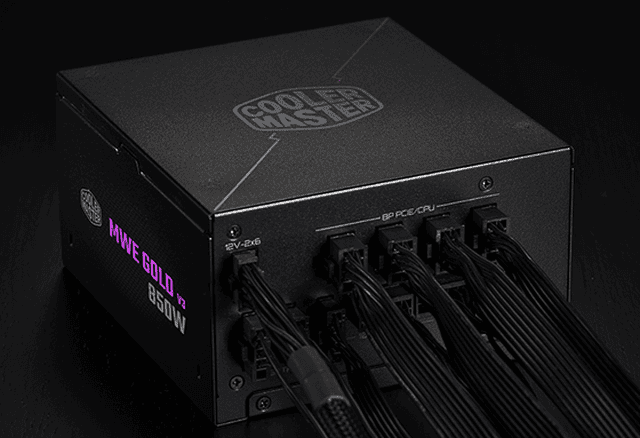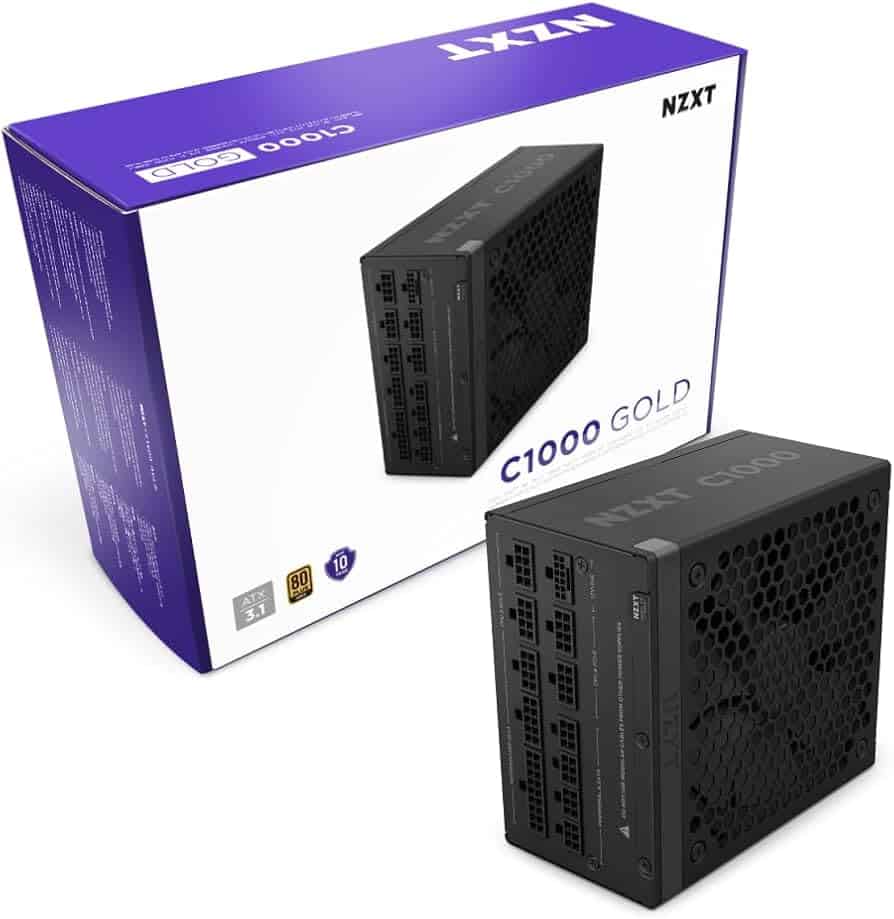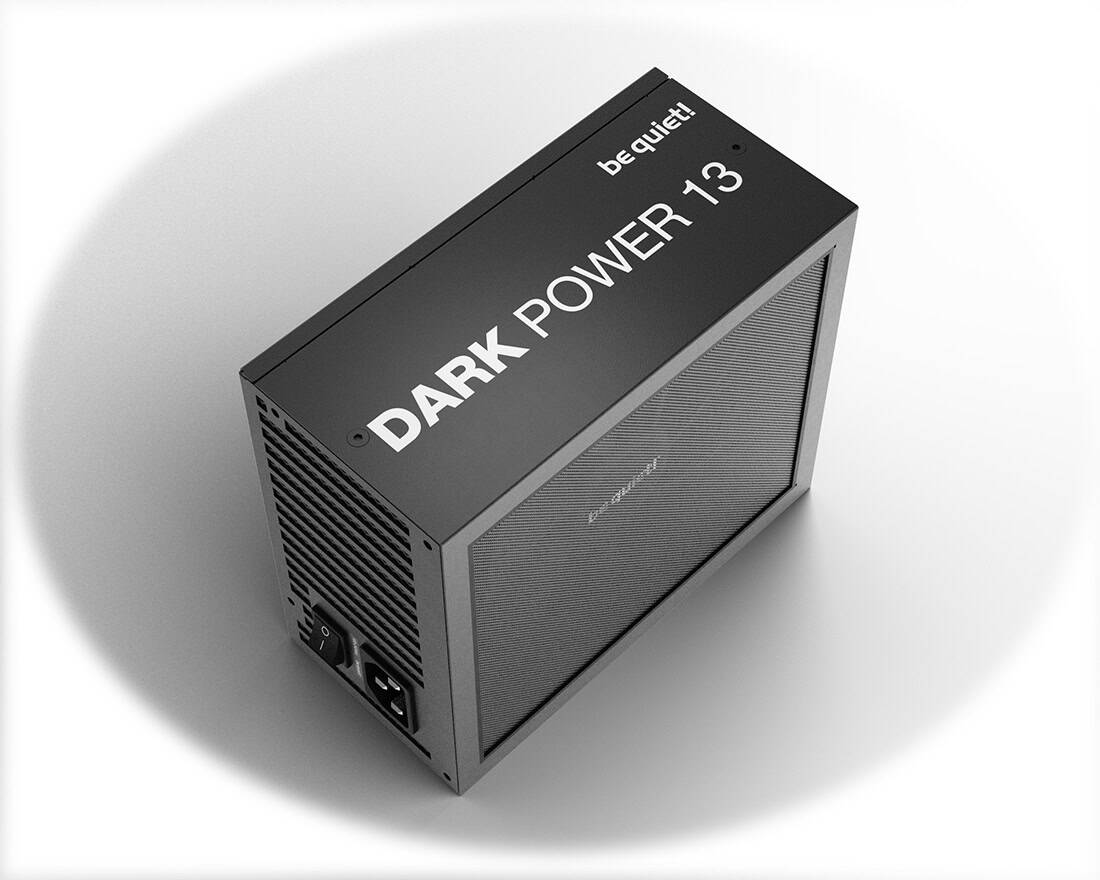Best Power Supply Recommendations For A Gaming PC (2025)
In the world of gaming PCs, your power supply is the unsung hero. While all the attention goes to flashy GPUs and screaming-fast CPUs, the PSU (Power Supply Unit) quietly does the heavy lifting—powering everything safely and efficiently. And in 2025, picking the right one has never been more critical, especially with next-gen GPUs, ATX 3.1 compliance, and 12V-2×6 connectors becoming the new norm.
A poor-quality PSU can cause random reboots, bottleneck performance, or worse—fry your entire system. On the flip side, a reliable, efficient PSU ensures your gaming rig runs smooth, cool, and future-ready.
Let’s break down the top choices and what to consider when picking the best PSU for your gaming PC in 2025.
🔌 How Much Wattage Do You Really Need?
Here’s a rough guide based on system types:
- Entry-level (RX 7600 / RTX 4060): 500–650W
- Mid-Range Systems:
- NVIDIA GeForce RTX 4070 / RTX 5070 / RTX 5070 Ti
- AMD Radeon RX 7800 XT / RX 9070
- Recommended PSU Wattage: 650W–750W
- High-End Systems:
- NVIDIA GeForce RTX 4080 / RTX 4090 / RTX 5080 / RTX 5090
- AMD Radeon RX 7900 XTX / RX 9070 XT
- Recommended PSU Wattage: 850W–1000W+
- Enthusiast / Overclocked / Multi-GPU: 1000–1300W
Don’t forget headroom for future upgrades, especially if you’re eyeing an RTX 5080 or next-gen Ryzen/Intel chips. Use PSU calculators (like OuterVision) to estimate your build’s exact needs.
Key PSU Features to Watch For in 2025
- 80 PLUS Certification: Aim for Gold or higher (Platinum or Titanium for silence-focused or small-form builds). These ratings mean better energy efficiency and less heat.
- ATX 3.1 Compliance: The latest standard improves transient response, ensuring better support for GPUs with sharp power spikes like the RTX 40 and 50 series.
- 12V-2×6 Connectors: The updated GPU connector replacing the problematic 12VHPWR design found in some RTX 4090s. It’s safer and more robust.
- Modularity: Fully modular PSUs let you connect only the cables you need, making your build neater and improving airflow.
- Warranty & Build Quality: A 10-year warranty is becoming standard among top-tier PSUs. Look for Japanese capacitors, silent fan modes, and proper protections (OCP, OVP, UVP, SCP, OTP).
Top Gaming PSU Picks for 2025
be quiet! Dark Power 13 1000W

- Why it’s great: Ultra-efficient (80 PLUS Titanium), nearly silent operation, premium build.
- Perfect for: High-end or overclocked builds requiring absolute reliability.
- Extra: Comes with an overclocking key to manually switch between single/multi-rail mode.
Cooler Master MWE Gold 850 V3

- Why it’s great: Affordable 850W unit with ATX 3.1 support and 10-year warranty.
- Perfect for: Balanced mid-to-high-end builds.
- Extra: Fully modular with flat cables for easier routing.
Corsair RM850x Shift White

- Why it’s great: Unique side-mounted connectors for easier cable access in tight spaces.
- Perfect for: Builders who prioritize aesthetics and airflow.
- Extra: 80 PLUS Gold, 10-year warranty, zero-RPM fan mode under low load.
NZXT C1000 Gold ATX 3.1

- Why it’s great: Fully modular, low-noise operation, and next-gen connector ready.
- Perfect for: RTX 4090 or Radeon RX 7900 XTX users.
- Extra: 135mm FDB fan keeps it quiet under load.
MSI MAG A750GL Gaming PSU
- Why it’s great: ATX 3.1 and PCIe 5.1 compatible, compact form factor.
- Perfect for: Mid-range gaming PCs.
- Extra: 10-year warranty and Japanese capacitors.
🔧 More Excellent PSU Options Worth Considering
| Model | Type | Efficiency | Wattage | Modular | Price |
|---|---|---|---|---|---|
| Corsair RM750e (2023) | ATX | 80+ Gold | 750W | Full | ~$99 |
| Corsair RM850e (2023) | ATX | 80+ Gold | 850W | Full | ~$119 |
| Corsair RM1000e (2023) | ATX | 80+ Gold | 1000W | Full | $179.99 |
| MSI MAG A850GL PCIE5 | ATX | 80+ Gold | 850W | Full | $119.99 |
| MSI MAG A650GL | ATX | 80+ Gold | 650W | Full | $79.98 |
| Corsair SF1000 (2024) | SFX | 80+ Platinum | 1000W | Full | $229.99 |
| Corsair RM850x (2024) | ATX | Gold equiv. | 850W | Full | $134.99 |
| MSI MAG A550BN | ATX | 80+ Bronze | 550W | No | $59.99 |
| MSI MAG A650BN | ATX | 80+ Bronze | 650W | No | $59.99 |
| Thermaltake Smart 500W | ATX | 80+ | 500W | No | $39.99 |
| Corsair SF750 (2024) | SFX | 80+ Platinum | 750W | Full | $178.97 |
🧠 Pro Tip: Don’t Overspend on Wattage
A 1000W PSU sounds powerful, but if you’re running a Ryzen 5 and RTX 4060, you’re throwing money away. Efficiency drops at low loads. A good rule? Aim for 50–70% usage at full load for best efficiency.
Whether you’re building a budget PC or a beastly 4K gaming machine, a good PSU is the foundation that powers your performance. Don’t cheap out here—get something reliable, efficient, and ready for the future.
Key Takeaways
- Choose a PSU with sufficient wattage (500W for entry-level, 700W+ for high-performance, 1000W+ for top-tier gaming PCs).
- Reliable brands like Corsair, Seasonic, and NZXT offer better protection for your valuable gaming components.
- Look for 80 Plus Gold certification or higher and modular cable designs for better efficiency and easier installation.
Understanding Power Supply Units for Gaming PCs
Power supply units are critical components that provide stable electricity to all parts of a gaming PC. Choosing the right PSU ensures system stability and can prevent damage to expensive components.
Defining PSU and Its Importance
A Power Supply Unit (PSU) converts AC power from your wall outlet into the DC power your computer components need. It’s often called the backbone of a PC system because it directly influences reliability and longevity.
Unlike other components that affect performance, a PSU affects everything’s ability to function properly. A high-quality PSU protects expensive parts like graphics cards and processors from voltage fluctuations and power surges.
The wattage rating indicates how much power a PSU can deliver. For gaming PCs, this number is crucial since modern GPUs and CPUs can draw significant power. Undersized PSUs can cause system instability, random shutdowns, or component damage.
Types of PSUs: ATX vs SFX for Gaming
ATX power supplies are the standard size found in most gaming PCs. They typically measure 150mm × 86mm × 140mm and fit in mid-tower and full-tower cases. ATX PSUs offer better cooling capabilities and higher wattage options, making them ideal for high-performance gaming rigs.
SFX power supplies are designed for small form factor PCs. At roughly 100mm × 63mm × 125mm, they’re significantly smaller than ATX units. Despite their compact design, modern SFX PSUs can deliver impressive power—many now offer 750W or more.
The choice between ATX and SFX depends on your case size and power needs. ATX units generally provide:
- Better cooling performance
- Higher maximum wattages (up to 1600W)
- Lower cost per watt
- More cable connections
SFX units excel in space-constrained builds while still supporting powerful components when properly sized.
Key Specifications of Gaming PC PSUs
When selecting a power supply for your gaming PC, understanding the technical specifications ensures you get the right unit for your needs. The wattage, efficiency rating, and physical design all play crucial roles in system performance.
Wattage and System Stability
Wattage is perhaps the most important specification when choosing a PSU for your gaming computer. For entry-level gaming setups, a minimum of 500 watts is recommended. Mid-range systems often require 650-750 watts, while high-performance builds need 750 watts or more.
The PSU’s wattage must exceed your system’s total power consumption by at least 20% to ensure stability. This headroom allows for power spikes during intense gaming sessions and future component upgrades.
When adding a powerful GPU to your system, it’s wise to consider a 750W or 850W PSU. Graphics cards often have the highest power demands in a gaming PC, especially under load.
Insufficient wattage can lead to system crashes, component damage, or failure to boot. Always calculate your total system requirements before selecting a power supply.
Efficiency Ratings and 80 Plus Certification
Efficiency ratings tell you how effectively a PSU converts AC power from your wall outlet into DC power for your components. The industry standard is the 80 Plus certification, which guarantees at least 80% efficiency at different load levels.
The 80 Plus tiers include:
- Standard: 80% efficiency
- Bronze: 82-85% efficiency
- Silver: 85-88% efficiency
- Gold: 87-90% efficiency
- Platinum: 89-92% efficiency
- Titanium: 90-94% efficiency
Higher efficiency means less wasted energy as heat, lower electricity bills, and cooler operation. Most gaming PCs benefit from at least an 80 Plus Bronze certification, though Gold offers an excellent balance of efficiency and cost.
Better efficiency also means the PSU produces less heat under load, which can improve overall system temperatures and component longevity.
Modularity and Cable Management
PSUs come in three cable configuration types:
- Non-modular: All cables permanently attached
- Semi-modular: Essential cables attached, others detachable
- Fully modular: All cables detachable
Modular PSUs improve airflow and aesthetics by eliminating unused cables. This feature is especially valuable in smaller cases where space is limited.
Good cable management not only makes your PC look cleaner but also enhances cooling performance. Bundled cables can restrict airflow and trap heat inside your case.
Many high-quality PSUs now include flat or ribbon-style cables that are easier to route and fold. These design improvements help keep your system organized and maintain proper airflow throughout the case.
When building a showcase PC with tempered glass panels, a fully modular PSU with custom sleeved cables can significantly enhance the visual appeal of your build.
Selecting a Reliable PSU
Choosing the right power supply unit is crucial for gaming PC stability and longevity. A quality PSU delivers consistent power to all components while protecting your expensive hardware from electrical issues.
Determining Power Requirements with PSU Calculator
Before purchasing a power supply, gamers should calculate their system’s total power needs. Online PSU calculators help estimate wattage requirements by factoring in all components. Most modern gaming builds with mid-range GPUs require around 500-650W, while high-end systems with powerful graphics cards might need 750-850W.
When using a calculator, include:
- CPU model and potential overclocking
- GPU type and quantity
- RAM capacity
- Storage drives
- Case fans and RGB lighting
- Future upgrade plans
It’s wise to add 20-30% capacity beyond your calculated needs. This buffer ensures your PSU won’t run at maximum capacity, reducing strain and extending its lifespan.
Protection and Safety Features
Quality PSUs include multiple protection features that safeguard expensive components from electrical damage. Look for these key protective mechanisms:
- OVP (Over Voltage Protection): Prevents excess voltage from reaching components
- UVP (Under Voltage Protection): Shuts down during brownouts to prevent unstable power
- OCP (Over Current Protection): Prevents excessive current to individual rails
- OPP (Over Power Protection): Shuts down when total power draw exceeds safe limits
- SCP (Short Circuit Protection): Immediately cuts power during short circuits
Modern PSUs with DC-to-DC conversion deliver more stable power to sensitive components. Solid capacitors and Japanese capacitors are indicators of quality construction and better reliability in power delivery.
Trusted PSU Brands
Several manufacturers have established reputations for reliable power supplies. Corsair offers excellent options like the RM750x series, combining quality and appropriate wattage for most gaming builds.
Seasonic stands out for exceptional build quality, with their Prime series receiving praise for performance and stability. Their units often feature longer warranties (7-12 years), reflecting confidence in longevity.
Other trusted brands include:
- EVGA – Known for customer service and reliability
- be quiet! – Offers the Pure Power 12 M series with solid performance
- Cooler Master – Provides good value options with reliable protection
Look for 80+ Bronze certification at minimum, with Gold or Platinum for better efficiency. FSP (Fortron Source Power) produces many white-label PSUs for other brands and offers reliable units under their own name.
Compatibility and Upgrade Considerations
When selecting a power supply for a gaming PC, compatibility with your components and future upgrades is crucial. Proper matching ensures system stability and longevity while planning ahead can save money on future upgrades.
Matching the PSU with Motherboard and Components
Your power supply must physically fit your case and properly connect to your motherboard. Most gaming motherboards use the standard 24-pin connector, but some high-performance models require additional 8-pin or 4-pin CPU power connectors.
Modern graphics cards have varying power requirements. Mid-range cards might need one 8-pin connector, while high-end models like those paired with an Intel Core i9 can require multiple 8-pin or even 12-pin connectors.
Connector Compatibility Checklist:
- 24-pin motherboard connector
- 4+4 pin or 8-pin CPU power
- PCIe 6+2 pin connectors for graphics cards
- SATA and Molex connectors for drives and accessories
Check that your PSU provides enough connectors for all your PC components before purchasing.
Future-Proofing with ATX 3.0/3.1 Standards
The newer ATX 3.0 and 3.1 standards represent significant improvements in power delivery for modern gaming systems. These standards were designed specifically to handle the power spikes from current-generation graphics cards.
ATX 3.0/3.1 power supplies include the 12VHPWR connector (also called 12V-2×6), which can deliver up to 600W to a single graphics card. This is particularly important for high-performance GPU setups.
Benefits of ATX 3.0/3.1:
- Better handling of power transients (sudden spikes)
- Improved power efficiency
- Support for PCIe 5.0 graphics cards
- More stable power delivery under heavy loads
While these newer PSUs cost more, they provide valuable future-proofing for your PC build as component power requirements continue to increase.
Frequently Asked Questions
Many PC builders have common questions about power supplies for gaming rigs. Getting the right PSU ensures system stability and protects your expensive components.
What factors should be considered when choosing a power supply for a gaming PC?
When selecting a power supply, efficiency ratings like 80 Plus Bronze, Gold, or Platinum indicate how well the PSU converts AC power to DC power. Higher ratings mean less energy wasted as heat.
Modularity is another important factor. Fully modular PSUs allow you to connect only the cables you need, reducing cable clutter and improving airflow inside your case.
The physical size of the power supply matters too. Standard ATX power supplies fit most cases, but small form factor builds may require SFX or SFX-L power supplies.
How does wattage affect the performance of a gaming PC’s power supply?
Wattage represents the maximum power a PSU can deliver to your components. Insufficient wattage can cause system instability, crashes, or prevent your PC from reaching peak performance.
Most gaming builds use between 400-600 watts during normal operation. However, power usage can spike during intensive tasks or gaming sessions.
Experts recommend choosing a PSU with about 20-50% more wattage than your calculated needs. This provides headroom for power spikes and future upgrades to more power-hungry components.
What are the most reputable brands for gaming PC power supplies?
Corsair, EVGA, and Seasonic are widely regarded as top-tier PSU manufacturers with excellent reliability and customer service. These brands typically offer comprehensive warranties of 7-10 years.
Be Quiet!, Thermaltake, and Cooler Master also produce quality power supplies at various price points. Their units often balance good performance with reasonable cost.
Avoid unknown brands with prices significantly lower than established manufacturers. These units may use inferior components that could fail and damage other parts.
How can one determine the appropriate size of a power supply for their gaming setup?
Online PSU calculators help estimate your power needs by entering your specific components. Popular calculators are available on websites like PCPartPicker and Newegg.
Add up the power requirements of your CPU, GPU, motherboard, RAM, storage drives, and cooling solutions. Then add 20-50% extra for headroom and future upgrades.
For a typical mid-range gaming PC, a 650W PSU is often sufficient. High-end systems with powerful GPUs and overclocked components may require 750W or higher.
What is the significance of the PSU tier list when selecting a power supply?
PSU tier lists categorize power supplies based on component quality, performance, and reliability. Higher-tier units typically use better capacitors, transformers, and circuitry.
These lists are created by experts who test and analyze various power supplies. They provide an easy reference for consumers to compare options across brands.
A tier list can help identify which budget-friendly options offer good value versus which expensive units might be overpriced for their actual performance.
Are there any power supplies specifically recommended for high-end gaming GPUs like the RTX 4090?
For an RTX 4090 or similarly power-hungry GPU, a high-quality 850W PSU is the minimum recommended. Many experts suggest 1000W or higher for stability and future-proofing.
NVIDIA themselves recommend at least a 850W PSU from a reputable manufacturer for systems using the RTX 4090. The power supply should be 80 Plus Gold certified or better.
Look for models with the new PCIe 5.0 power connectors (12VHPWR) to natively support these high-end cards without adapters, which can reduce cable clutter and potential connection issues.







